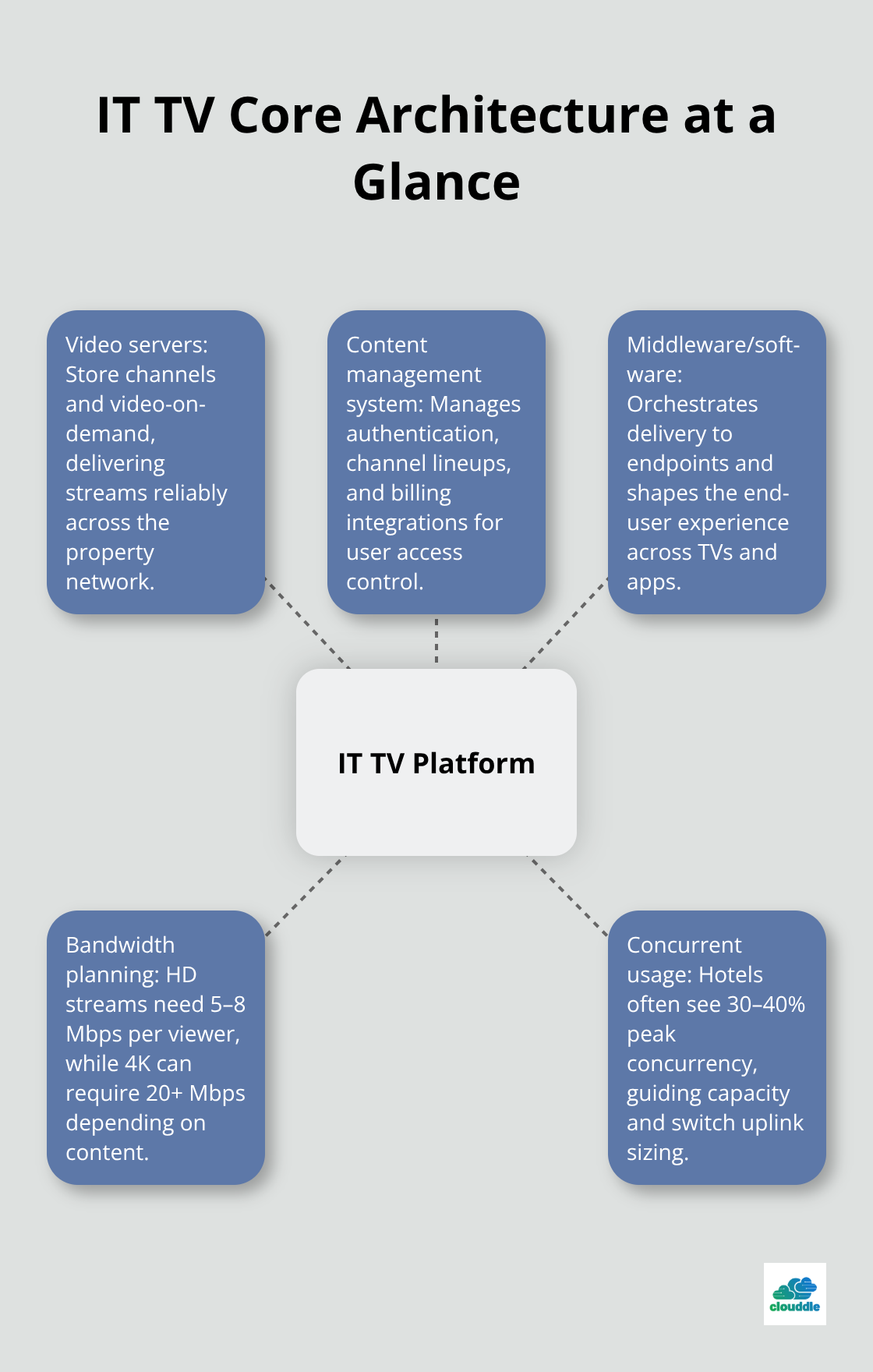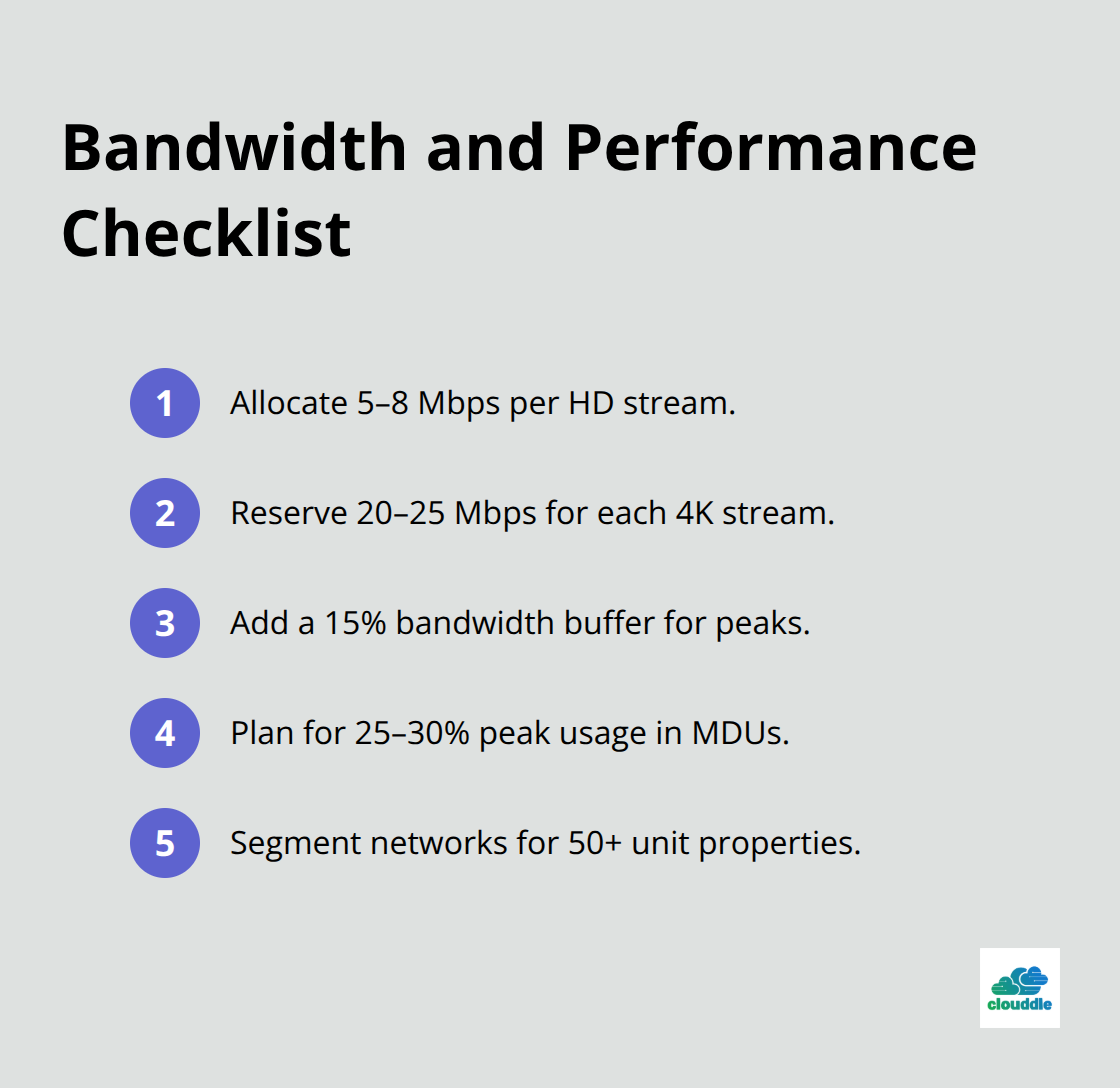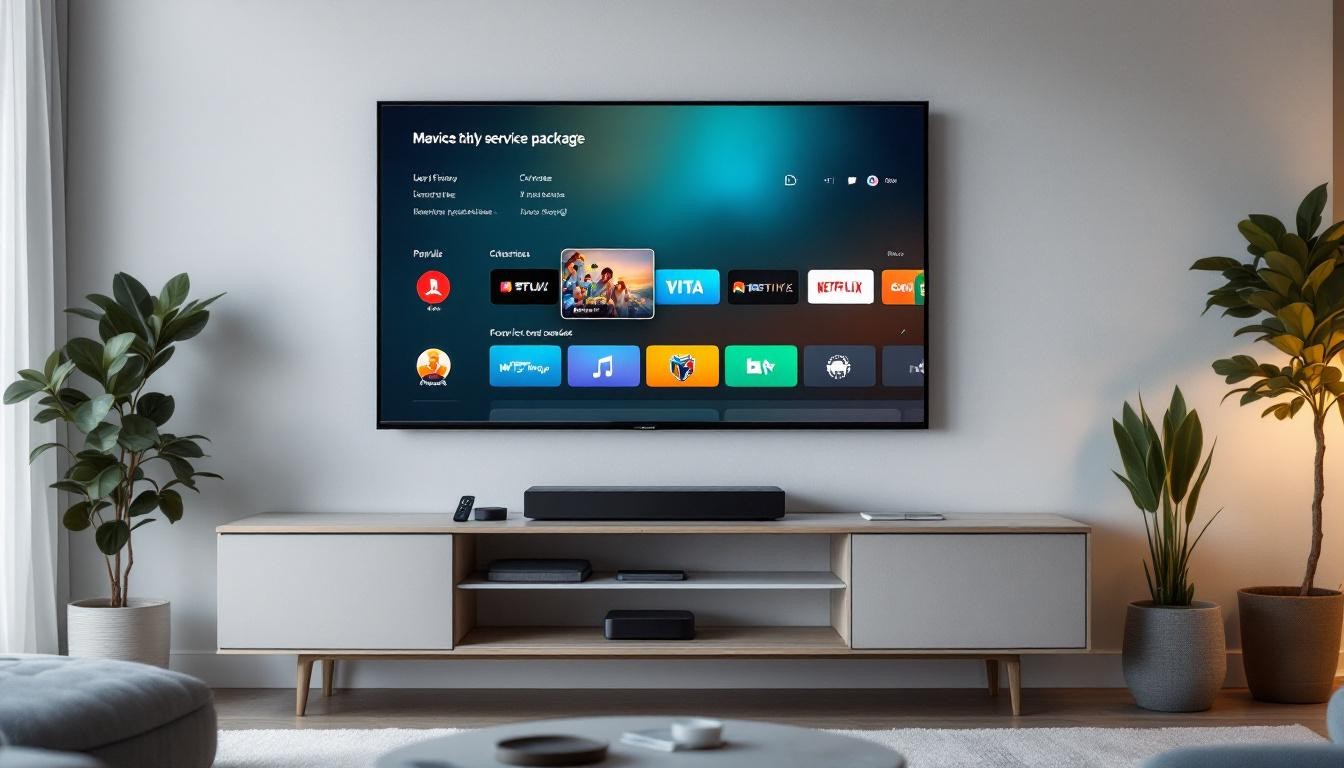IT TV service packages transform how businesses and multi-dwelling units deliver television content through internet protocol networks. These solutions replace traditional cable infrastructure with flexible, scalable streaming systems.
We at Clouddle see growing demand for IP-based television services that integrate seamlessly with existing network infrastructure. This guide covers everything you need to evaluate providers, compare features, and implement the right solution for your organization.
What Makes IT TV Different
IT TV service packages deliver television content through internet protocol networks instead of traditional coaxial cables. These systems stream content directly from servers to end-user devices using your existing network infrastructure. The technology eliminates the need for dedicated cable runs and set-top boxes in every room, which reduces installation complexity compared to traditional systems.
Core Components and Architecture
Modern IT TV solutions include video servers, content management systems, and software that work together as an integrated platform. The servers store and distribute content while management systems handle user authentication, channel lineups, and billing integration.

Most business implementations require 5-8 Mbps for HD content per concurrent viewer, with 4K content that demands 20 Mbps or more per stream. The average hotel deployment sees 30-40% concurrent usage during peak hours, making bandwidth planning straightforward for capacity decisions.
Cost Advantages Over Traditional Systems
Traditional cable systems require expensive infrastructure investments that include amplifiers, splitters, and miles of coaxial cable throughout buildings. IT TV eliminates these costs entirely and reduces deployment expenses significantly for new installations. Monthly operational costs drop substantially because IT TV providers typically charge per active user rather than per room or outlet. A 200-room hotel that switches from traditional cable saves thousands annually in equipment rental fees alone. Maintenance becomes simpler since technicians work with standard network equipment instead of specialized cable television hardware.
Business Implementation Benefits
Multi-dwelling units and hotels gain powerful management capabilities through centralized administration systems. Property managers can instantly add or remove channels, create custom welcome screens, and integrate billing systems without truck rolls or technician visits. The technology supports unlimited simultaneous viewers on the same content stream, unlike traditional systems that require signal amplification for large deployments. Guest satisfaction scores improve when properties upgrade to IT TV systems due to better picture quality and channel selection flexibility.
These technical advantages and cost savings make IT TV an attractive option, but success depends heavily on selecting the right features for your specific needs.
Key Features to Look for in IT TV Packages
Bandwidth Planning and Streaming Performance
Your network infrastructure must handle peak concurrent usage without performance degradation for other business applications. Hotels typically experience varying concurrent viewership patterns during different hours, while multi-dwelling units experience 25-30% peak usage. Each HD stream requires 5-8 Mbps of dedicated bandwidth, with 4K content that demands 20-25 Mbps per concurrent viewer. Most IT TV providers recommend you allocate 15% additional bandwidth above calculated peak requirements to prevent buffer issues during unexpected usage spikes. Network segmentation becomes essential for properties with 50+ units to prevent stream traffic from overwhelming business operations like point-of-sale systems or property management software.

Content Library and Channel Management
Premium IT TV packages should include 200+ channels with major broadcast networks, cable channels, and streaming content integration. The most successful deployments offer local broadcast channels alongside popular cable networks like ESPN, CNN, and Discovery Channel. Properties that cater to international guests require multilingual programming options (with Spanish-language channels showing the highest demand according to hospitality industry data). Video-on-demand libraries with extensive content selections can improve guest satisfaction compared to live-only packages. Administrative control panels must allow real-time channel lineup modifications, custom welcome screens, and instant content updates without technician visits or service interruptions for existing viewers.
Network Integration and Infrastructure Requirements
Your existing network equipment must support Quality of Service protocols to prioritize stream traffic over standard internet usage. Managed switches with VLAN capabilities prevent stream congestion from affecting critical business applications like reservation systems or security cameras. Most successful implementations require network upgrades to gigabit ethernet throughout the property, with fiber backbone connections for buildings that exceed 100 units (professional installation teams must configure network settings to prevent broadcast storms and optimize multicast traffic distribution). The IT TV system should integrate seamlessly with existing property management systems for automated billing and guest account management.
These technical specifications form the foundation of any successful IT TV deployment, but selecting the right provider requires careful evaluation of their reliability, support capabilities, and pricing structure.
Choosing the Right IT TV Service Provider
Provider Reliability and Performance Standards
Provider uptime statistics reveal everything about their service quality and technical capabilities. Demand uptime guarantees with specific penalty clauses that compensate you for outages that exceed 4 hours monthly. The best providers offer redundant content delivery networks across multiple data centers, which prevents service interruptions during server maintenance or regional internet issues. CatchOnTV maintains 4.7-star ratings with documented uptime above 99.95%, while many budget providers struggle to achieve 98% reliability during peak usage periods. Technical support response times matter significantly for business operations – premium providers guarantee 15-minute response times for critical issues, while budget options often require 4-8 hours for initial contact.
The number 100% seems to be not appropriate for this chart. Please use a different chart type.
Contract Terms That Protect Your Investment
Month-to-month contracts cost 20-30% more than annual agreements, but they provide flexibility for properties with seasonal occupancy changes. Avoid providers that demand 3-year commitments without exit clauses, especially for new deployments where you cannot predict actual usage patterns. Installation fees range from 0 for basic setups to ,000 for complex multi-building deployments (with reputable providers that offer free installation for contracts that exceed 24 months). Equipment buyout options become essential if you plan to switch providers within 2 years – lease agreements typically cost 40% more over 36 months compared to direct equipment purchases. Bandwidth overage charges can devastate budgets, so negotiate fixed-rate packages that include 25% buffer capacity above your calculated peak requirements.
Professional Installation and Ongoing Support
Certified technicians should complete network assessments before installation begins, which identifies potential bottlenecks in your existing infrastructure that could affect performance. Professional installations include network optimization, VLAN configuration, and Quality of Service protocol setup that prevents traffic from interfering with business applications. Maintenance contracts with 4-hour response guarantees cost $200-400 monthly for properties with 100+ units, but they prevent extended outages that damage guest satisfaction scores. Remote monitoring capabilities allow providers to identify and resolve issues before they affect end users (this feature separates professional providers from budget alternatives that rely on reactive support models). For properties looking to optimize internet speed across their network, proper configuration during installation becomes critical for long-term performance.
Final Thoughts
IT TV service packages deliver substantial advantages over traditional cable systems through reduced infrastructure costs, simplified maintenance, and enhanced management capabilities. Properties that implement these solutions see immediate operational savings and improved guest satisfaction scores due to better content quality and channel selection flexibility. Your decision should prioritize provider reliability with documented uptime above 99.5%, professional installation services that include network optimization, and contract terms that protect your investment.
Bandwidth requirements demand careful planning – allocate 5-8 Mbps per HD stream with 15% buffer capacity for peak usage scenarios. Network infrastructure readiness forms the foundation for successful deployment (properties with outdated ethernet systems require upgrades to gigabit speeds). Managed switches with VLAN capabilities prevent stream traffic from affecting business operations.
We at Clouddle specialize in comprehensive technology solutions that integrate networking, entertainment, and security services for hospitality and multi-dwelling properties. Our Network as a Service approach eliminates upfront investments while providing 24/7 support and flexible contracts. Contact Clouddle to evaluate your property’s readiness for IT TV implementation and develop a customized deployment strategy.


